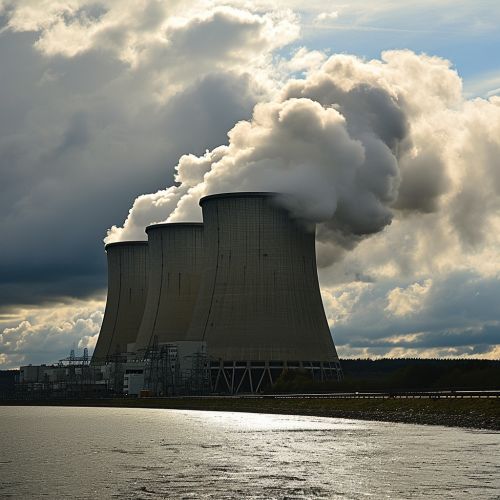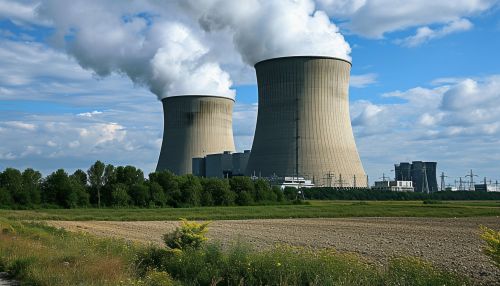Nuclear Fuel Cycle
Introduction
The nuclear fuel cycle, also known as the nuclear fuel chain, is a series of industrial processes that involve the production of electricity from uranium in nuclear power plants. Uranium is a heavy metal that is abundant in the earth's crust and can be extracted and processed to produce nuclear fuel.


Uranium Mining and Milling
The nuclear fuel cycle begins with the mining of uranium ores. These ores are then milled, or crushed and ground into a fine powder. The uranium is then extracted from the ore through a chemical process known as leaching.
Conversion and Enrichment
The next step in the nuclear fuel cycle is the conversion of the uranium into a gas, uranium hexafluoride (UF6), which is suitable for enrichment. Enrichment is the process of increasing the concentration of the uranium-235 isotope, which is the isotope that can sustain a nuclear chain reaction.
Fuel Fabrication
After enrichment, the UF6 is converted back into a solid form, uranium dioxide (UO2), which is then fabricated into fuel pellets. These pellets are then loaded into fuel rods, which are assembled into fuel assemblies for use in nuclear reactors.
Nuclear Reactors
In a nuclear reactor, the uranium fuel undergoes a controlled nuclear chain reaction. The heat generated by this reaction is used to produce steam, which drives a turbine to generate electricity.
Spent Fuel and Waste Management
After a period of time, the fuel in a nuclear reactor becomes spent and must be replaced. Spent nuclear fuel is highly radioactive and must be managed carefully. It can either be reprocessed to extract usable materials, or it can be disposed of as high-level radioactive waste.
Reprocessing and Recycling
Reprocessing is a method of treating spent nuclear fuel to extract valuable materials that can be recycled into new fuel. This process reduces the volume of high-level waste, but it also poses significant technical and security challenges.
Disposal of High-Level Waste
The final step in the nuclear fuel cycle is the disposal of high-level radioactive waste. This waste is typically stored in deep geological repositories, which are designed to isolate the waste from the environment for hundreds of thousands of years.
Conclusion
The nuclear fuel cycle is a complex and challenging process that requires careful management to ensure safety and security. Despite these challenges, nuclear power remains a significant source of electricity worldwide, and the nuclear fuel cycle plays a crucial role in this energy production.
